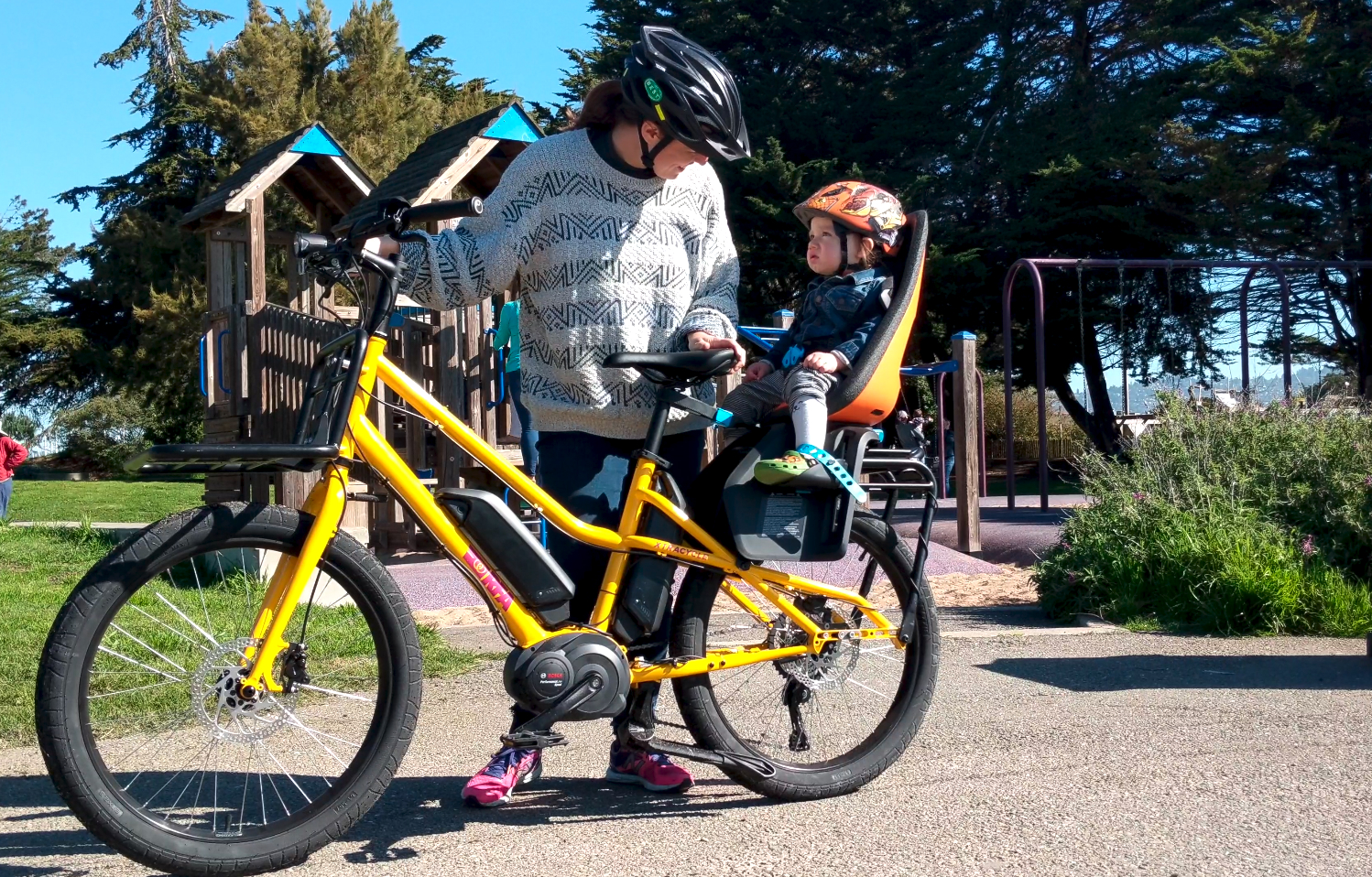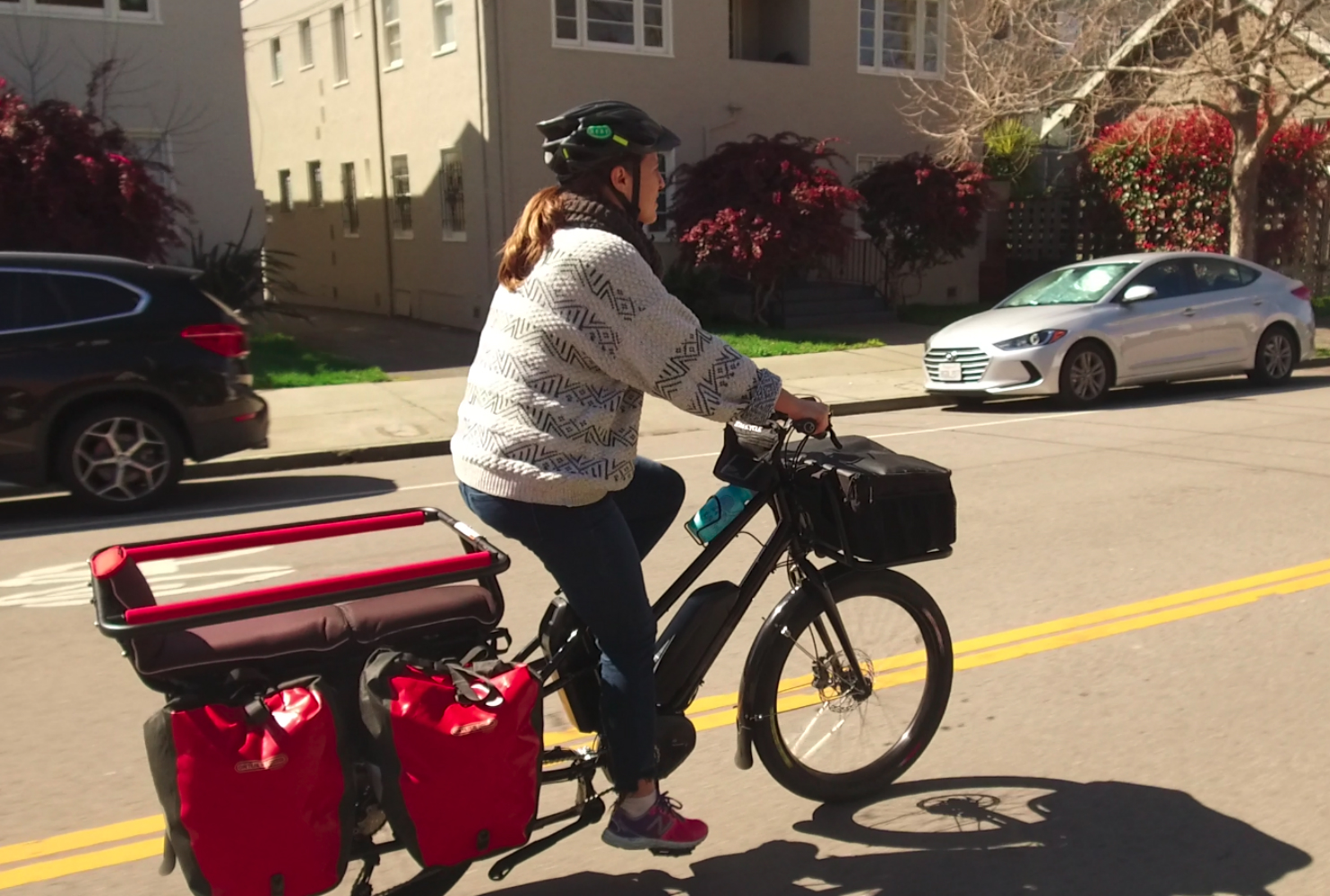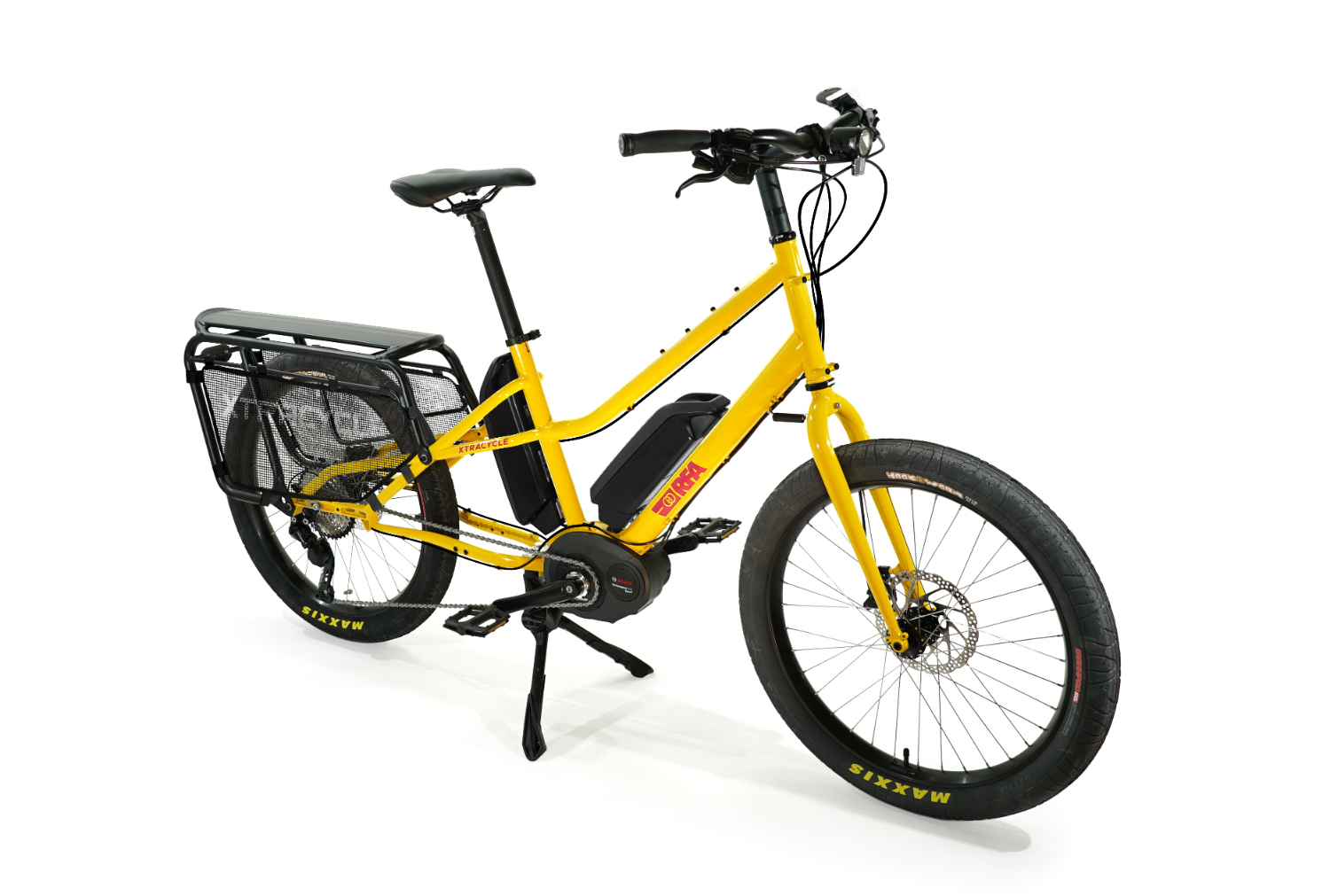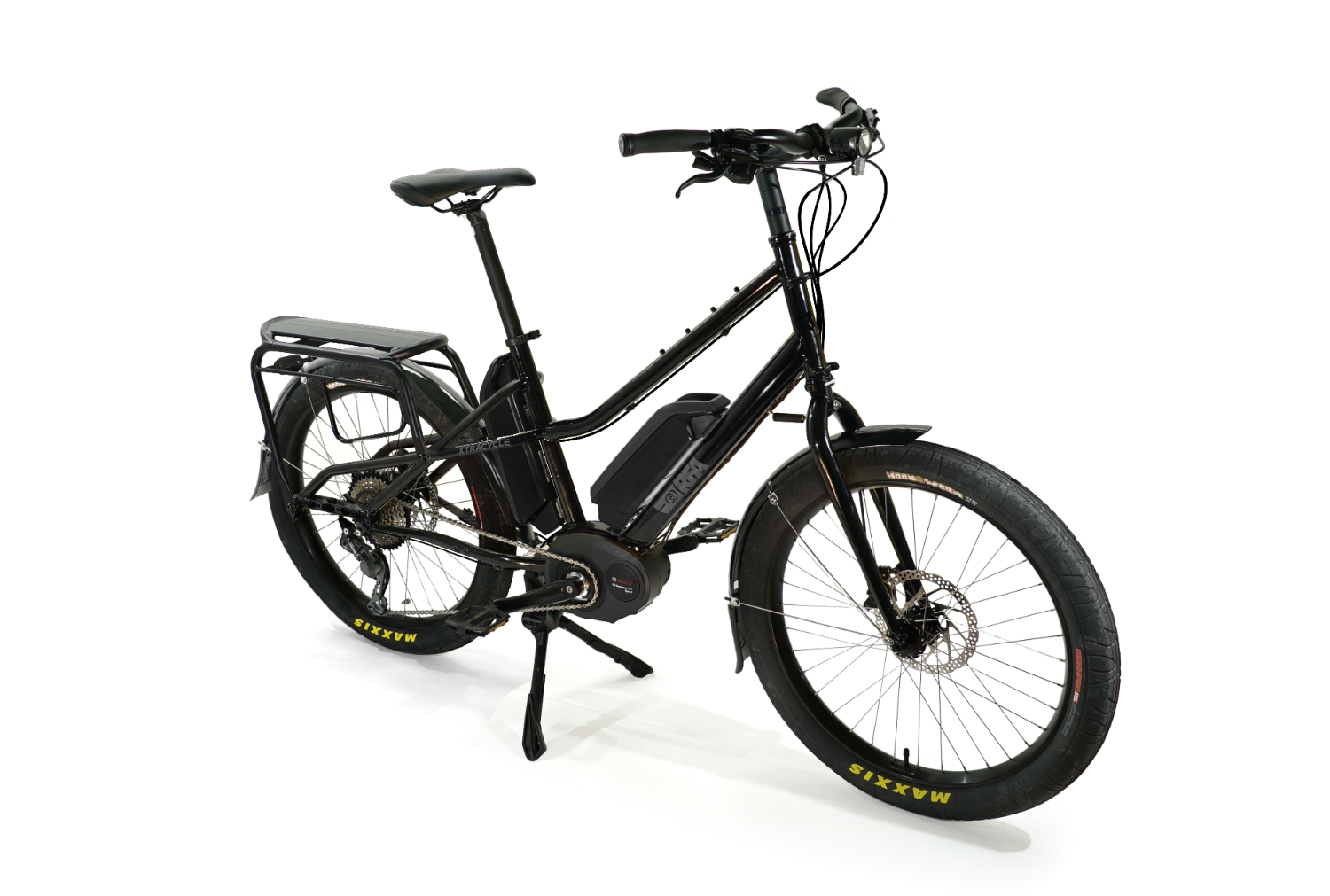Oakland-based Xtracycle’s RFA (Ready for Anything) pedal-assist ebike solves a common problem in choosing a personal vehicle when you need more than one type now or in the future.
RFA’s dual-position wheelbase enables its core design concept. By changing the wheelbase and picking from a selection of add-on components, you can transform the ebike from a short-frame sport bike to a longer-frame utility bike. An agile, short wheelbase pedal-assist ebike sports model isn’t the right ride to carry a couple of kids and cargo. The RFA ebike adapts as your needs change.
Ross Evans, Xtracycle’s CEO and founder, describes the RFA as future-proof.”
“By ‘future-proof’ we mean this is a bike that can grow and change to meet the needs almost anyone, through all stages of life, from young adult, through parenthood, into older-age,” Evans says. “We wanted this to be a bike that never became obsolete. We’ve always aspired to that, but with the RFA, we think we’ve pushed the idea further than anybody ever has with regard to bicycles.”
When the RFA is in sport mode, it’s a perfect size for one person and fits in elevators and on bus and car bike racks. You can carry a moderate amount of cargo, depending on accessories, and even a small child in a Yepp accessory seat.
With the rear wheel in the utility bike position, about 5.5-inches longer, the RFA can carry two children in Yepp seats and a variety of bags and baskets. You can rotate the handlebars 180 degrees to shorten the ebike’s overall length to fit on racks and in elevators.
You don’t need to buy everything at once, which helps to keep the ebike’s initial cost lower. Start with the bike configured in Sport Mode or Utility Mode. Later on, as your needs change, you can purchase what you need to switch to the other mode.
All RFA models come with a Bosch mid-drive electric assist drive and your choice of three motors and three battery sizes. The motor alternatives differ in maximum torque (48 to 55 foot-pounds) and top speed (20 to 28 miles per hour).
The Bosch battery choices and approximate riding range per charge are one 400Wh battery (40 miles), one 500Wh battery (45 miles), or dual 5ooWh batteries (95 miles). Your riding type and distance should determine which motor and battery you choose. Bosch has a range calculator that can help with the motor and battery decisions.
Depending on your selections, including initial configuration in sport or utility mode, motor, battery size, tire size, and accessories, the RFA cost ranges from $3,977 to $5,747. Electric bikes aren’t inexpensive unless you compare them to other modes of personal transportation (plus the cost of a no-longer-necessary gym membership for cardio workouts).
“Thinking about a bike as transportation, e-assist is a game-changer,” Evans said. “Hills, heat, distance, and time, things that might have been concerns on a regular bike become non-issues. Yet electric-assist is an investment, and that’s why we wanted to make sure we created a bike that will hold its value in someone’s life for literally decades.”








